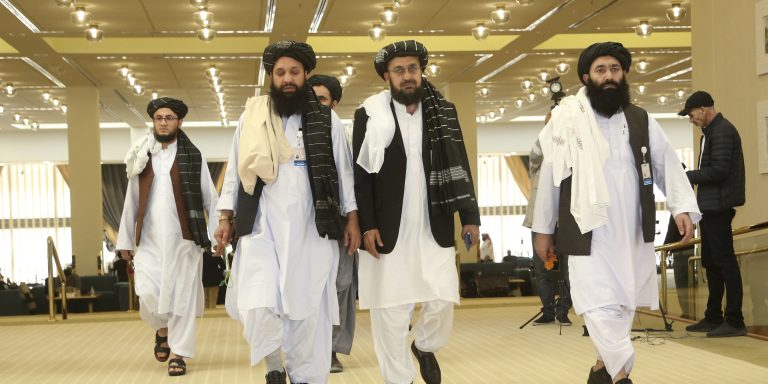INTELBRIEF
March 11, 2020
IntelBrief: Geopolitical Fallout from the U.S.-Taliban Deal in Afghanistan

- There are still questions surrounding the recent U.S.-Taliban agreement, including how Washington can pressure the Taliban to fulfill the key tenets of the deal, as well as what the U.S. strategy is for supporting the Afghan government.
- External actors, including the UAE and elements in Pakistan, are meddling in Afghanistan, working behind the scenes to sponsor various factions within the Taliban in an effort to spoil the peace deal.
- Much of the focus has now shifted to a proposed prisoner swap between the Taliban and the Afghan government.
- It remains unclear exactly how the United States will be able to verify the Taliban’s security guarantees, the most important of which is its alleged intention to denounce terrorist groups like al-Qaeda.
.
The ink has barely dried from signing the peace agreement between the United States and the Afghan Taliban and already the deal is being tested by potential spoilers. There are still a litany of questions surrounding the agreement, including how Washington intends to pressure the Taliban to obey the key tenets of the deal, as well as what the U.S. strategy is for supporting the Afghan government. External actors, including the United Arab Emirates and elements within Pakistan, are meddling in Afghanistan, working behind the scenes to sponsor various factions within the Taliban in an effort to spoil the peace deal. Several regional powers are also eyeing a U.S. withdrawal as an opportunity to increase their influence, including China, Russia, Saudi Arabia, and India, among others.
With the intra-Afghan dialogue about to commence, the United States has already begun withdrawing troops from Afghanistan. Earlier this week, the United States called for a vote at the United Nations Security Council as an endorsement of the agreement with the Taliban. The United States and Russia signed a joint statement on the agreement which expressed a commitment to helping forge and sustain an Afghan peace. Per the terms of the deal, the Trump administration is scheduled to reduce troop levels from 12,000 to 8,600 within the first 135 days of the agreement. The next steps in the agreement could be hobbled by squabbling between Afghan President Ashraf Ghani and his main political rival, Abdullah Abdullah, who held competing swearing-in ceremonies this week. It will be challenging for the Afghan government to present a united front during intra-Afghan talks with the Taliban considering the political infighting between Ghani and Abdullah.
Much of the focus has now shifted to a proposed prisoner swap between the Taliban and the Afghan government. The Taliban is expected to release as many as 1,000 Afghan troops as part of the agreement. The Afghan government is slated to hand back 5,000 fighters to the Taliban, although that number has been disputed. Furthermore, the Afghan government made it clear through an official statement that the prisoner exchange is contingent upon security and peace developments in the country. The prisoner swap has been a major source of contention, although President Ghani has reportedly signed the decree that would facilitate the exchange. Once considered an important confidence building measure, the swap has proven to be difficult to implement. Sediq Sediqqi, President Ghani’s spokesman, sent out a series of tweets after midnight on Wednesday laying out the terms of a phased release. As has been widely reported, there have been several high-profile acts of violence. The Taliban has pledged not to attack U.S. forces but will continue to fight against Afghan troops.
It remains unclear exactly how the United States will be able to verify the Taliban’s security guarantees, the most important of which is its alleged intention to denounce terrorist groups like al-Qaeda. Few knowledgeable observers are optimistic that the Taliban will formally break from al-Qaeda, especially since the United States has little to no leverage to enforce this mechanism. Even the agreement itself merely stipulates that the Taliban agree to ‘prevent any group or individual, including al-Qaeda, from using the soil of Afghanistan to threaten the security of the United States and its allies.’ The agreement does not specify who the United States’ allies are and al-Qaeda is likely to continue operating throughout South Asia, including in Afghanistan and Pakistan while looking to grow its network in India through al-Qaeda in the Indian Subcontinent (AQIS).
.
For tailored research and analysis, please contact: info@thesoufancenter.org